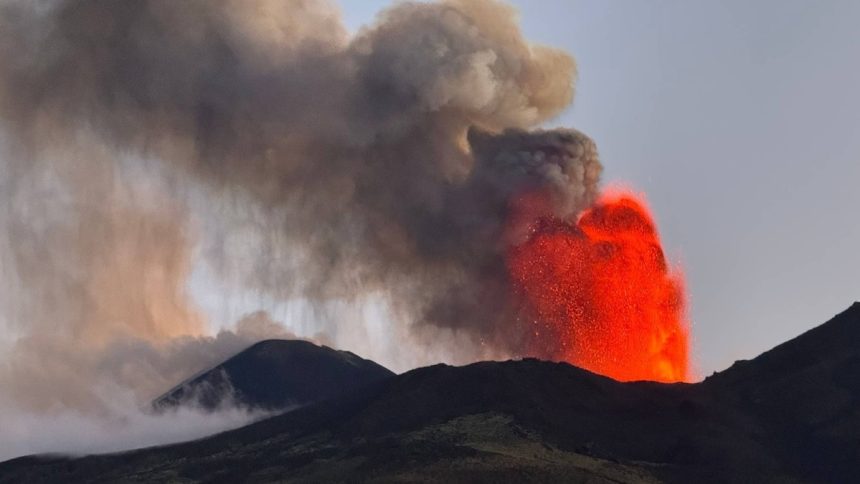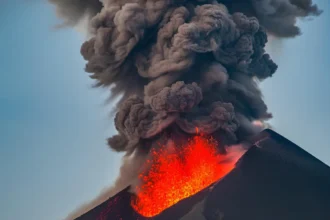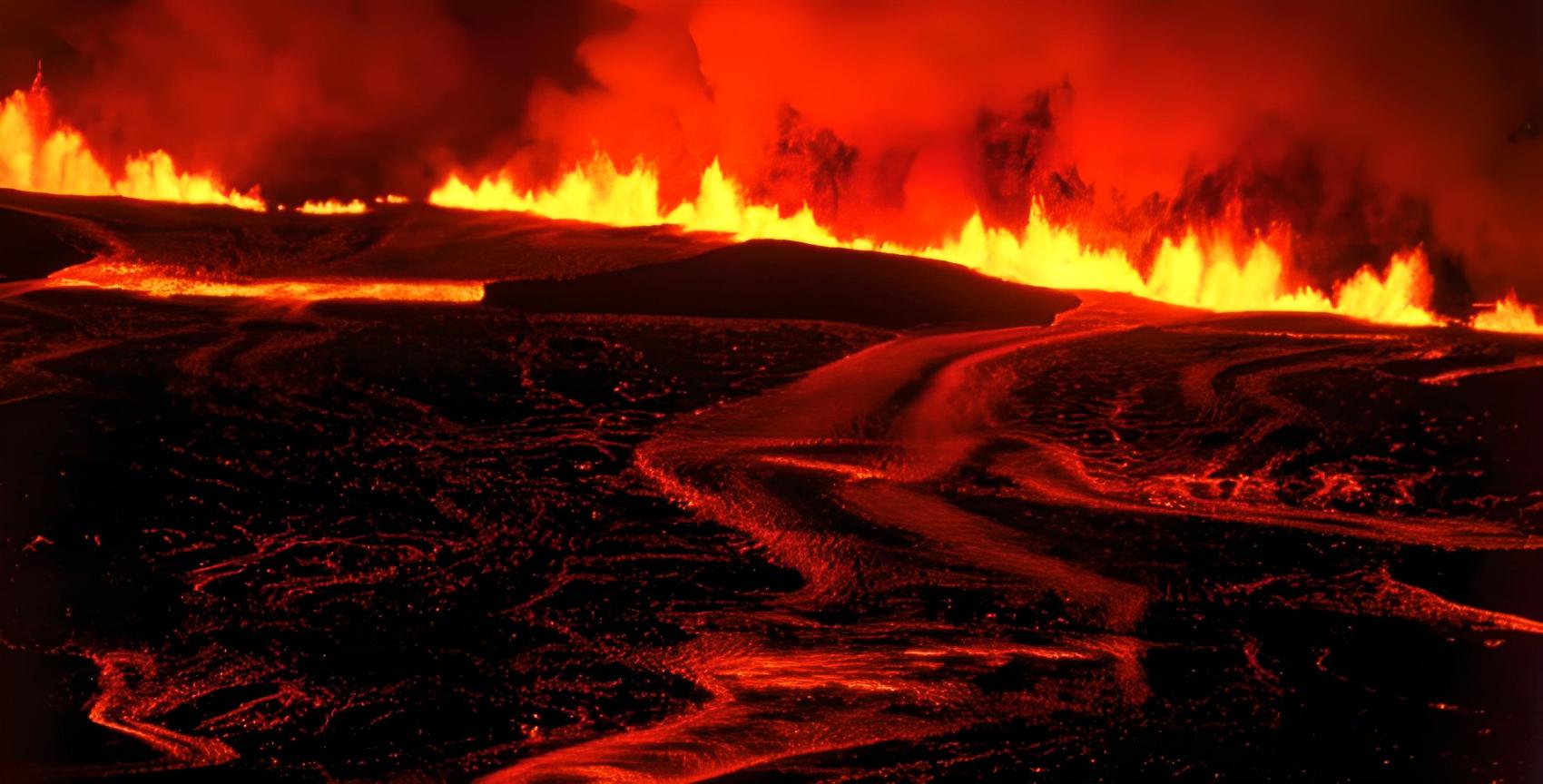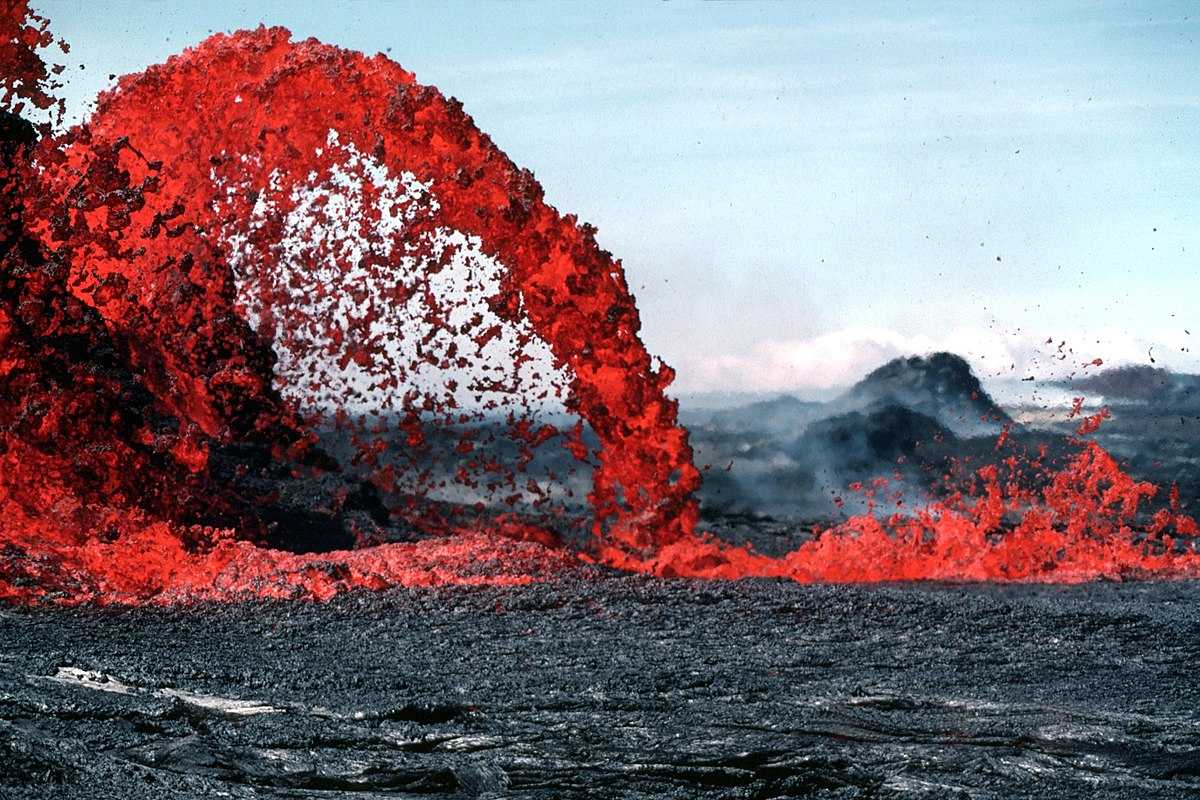For a few weeks, the Mediterranean lighthouse’s permanent explosive activity has been at a fairly high level. However, the situation changed last Wednesday, when a new effusive phase began from the north crater. As with each occurrence of this type of activity, the steep slope causes the flow to collapse, generating pyroclastic flows down to the coast. Although this type of activity is not rare at Stromboli, civil protection nevertheless triggered a red alert yesterday, July 4.
For a few weeks now, Stromboli’s usual explosive activity has been at a fairly high level, with a rather high explosive frequency, mainly at the north crater, one of the two active zones of the crater platform. When I was there at the end of May, for example, explosions occurred approximately every 5 to 6 minutes on average, ensuring a spectacular show!
One of the three active vents also displayed “spattering,” a splashing activity that revealed a lava level close to the surface. This sometimes overflowed, creating short ephemeral flows on May 24 and 27, and more recently on June 23 and 28.
A new effusive phase began on July 3. Like the previous ones, the lava overflow seems to have caused part of the cone formed by this intense explosive activity to collapse, resulting in an initial sequence of pyroclastic flows rushing down the Sciara del Fuoco, the steep slope on the northwest flank of the volcano that plunges directly into the Tyrrhenian Sea from the crater area.
A More Intense Effusive Phase
The next day, July 4, around 4:10 PM local time, a new effusive vent opened at about 700 meters altitude, just below the north crater. Particularly well-fed, this lava flow reached the coast around 5:30 PM, thus covering 1,000 meters of distance at an average speed of 12 meters per minute! As on the previous day, this also generated pyroclastic flows in the Sciara del Fuoco, with the event at 6:18 PM clearly standing out from the others as this cloud of hot gas and ash spread over the sea for several hundred meters! Moreover, the ash from these collapses formed a cloud that rose to over 2,000 meters in altitude.
While impressive, these various phenomena are not rare at Stromboli. Because this activity is still more significant than usual, civil protection decided to raise the alert level to red, implying a strengthening of the volcano’s monitoring system. For now, no measures directly affect tourist activity, which is starting to be in full swing on this wonderful little island in the Mediterranean Sea!





